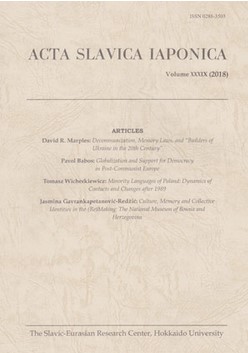
Jay H. Jasanoff, The Prehistory of the Balto-Slavic Accent
Review of: Yamazaki Yoko - Jay H. Jasanoff, The Prehistory of the Balto-Slavic Accent [Brill’s Studies in Indo-European Languages & Linguistics, Volume 17] (Brill 2017), 268 pp.
More...We kindly inform you that, as long as the subject affiliation of our 300.000+ articles is in progress, you might get unsufficient or no results on your third level or second level search. In this case, please broaden your search criteria.

Review of: Yamazaki Yoko - Jay H. Jasanoff, The Prehistory of the Balto-Slavic Accent [Brill’s Studies in Indo-European Languages & Linguistics, Volume 17] (Brill 2017), 268 pp.
More...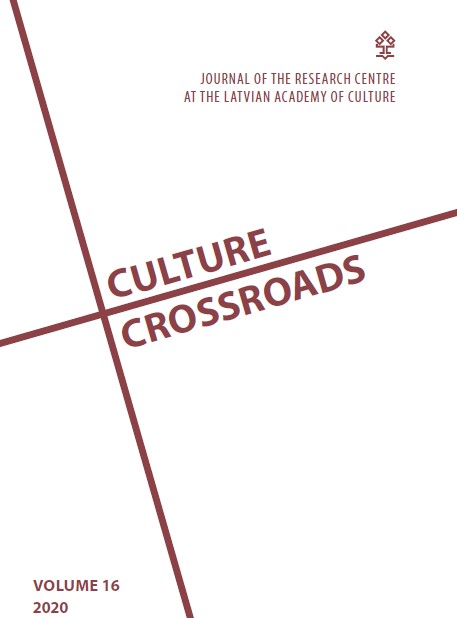
Proverbs form part and parcel of intangible cultural heritage. They are handed down from generation to generation and retained in the collective long-term memory of a people, constituting part of their language and culture. The purpose of this paper is to revisit proverbs and examine some of their essential features in the system of language and in their creative use in discourse from a cross-language and a cross-cultural perspective. This approach calls for semantic and stylistic analyses of empirical material, which I have chosen from my own archive of English and Latvian proverbs. Linguistic examination of proverbs promotes an understanding of their functioning across the broad spectrum of languages and cultures, bringing out similarities in the figurative structure of their base form and their stylistic use in various types of discourse. Cognitive linguistic research on proverbs reveals an infinite diversity of expression of figurative thought: a manifestation of the capacity of the human mind for abstraction and generalisation. The study of figurative meaning of proverbs and its changes in discourse accounts for the uniqueness of their stylistic use in text, which lies in the creativity of the cognitive mind. Stylistic use of the same proverb and the same stylistic pattern yields a different creative form of expression. Novel stylistic instantiations emerge in discourse as a reflection of the development of figurative thought.
More...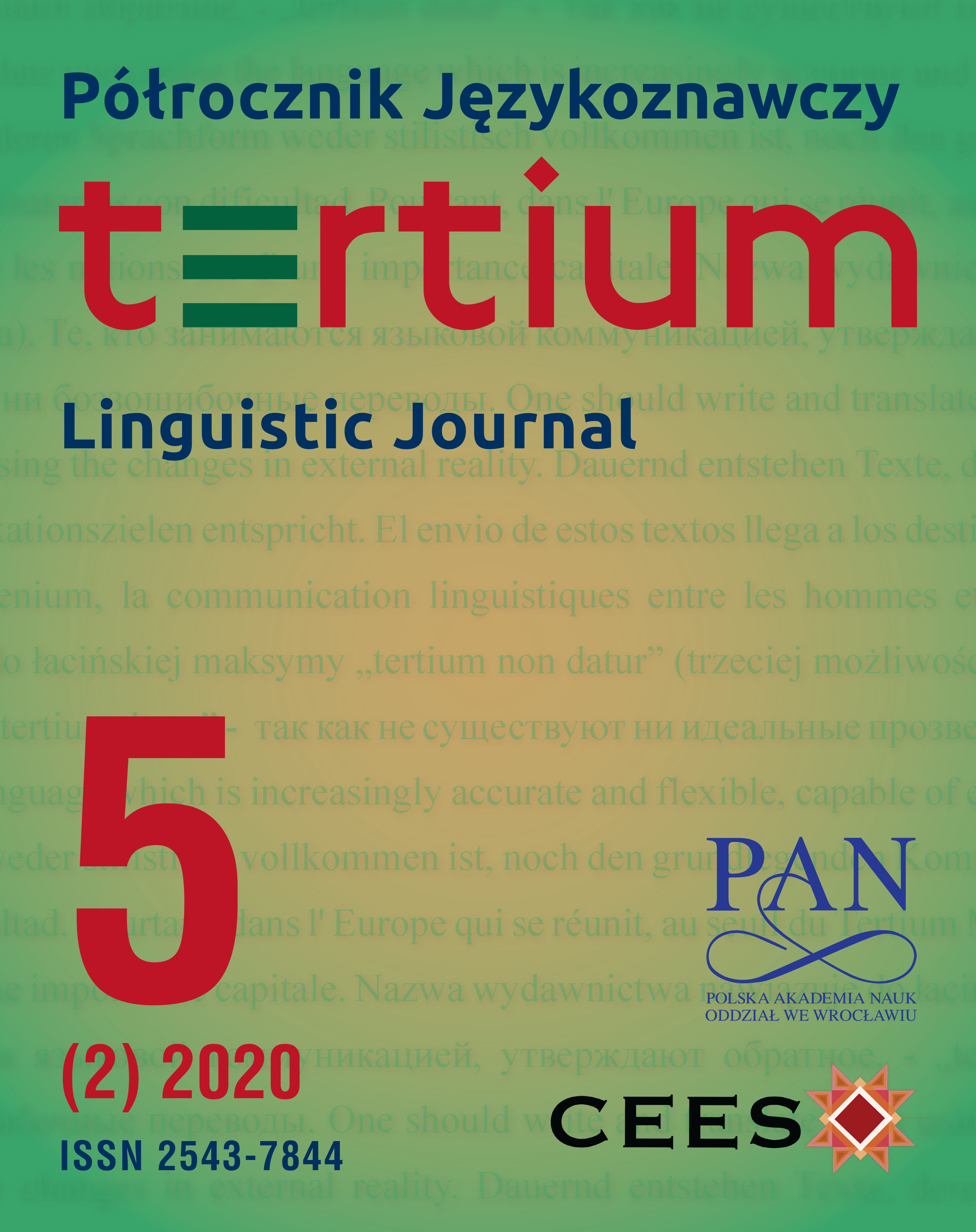
Language is a powerful communication tool. A skilful person uses words and manipulates them for different purposes; be that for persuading clients in buying different products or joining a congregation; soothing aggravated patients and consoling people who lost their loved ones. Language is used for teaching, informing, entertaining and making people laugh. Many public speakers, teachers, politicians and leaders use humour for breaking the ice and engaging the audience into listening. Moreover, nowadays a vast number of sitcoms are popular among different age groups based on the topics, genre and the audience’s field of interest. One such series which has caught the interest of a broader audience on Netflix is The Big Bang Theory. The usage of idioms, wordplays, puns, rhyming structures, pop culture language and scientific jargon, permeated with humour, are widely spread into the characters’ daily conversations through entire episodes. From the linguistic point of view, the corpus of The Big Bang Theory episodes will be thoroughly analysed for finding the relevance of using idioms, wordplays, puns and other structures in transmitting humorous messages to the audience.
More...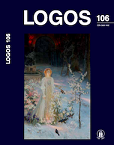
The article presents the frame modeling of the concept of “illegitimate child” in the Russian, Czech and Slovak languages compared to English. On the basis of the fundamentals of Slavic ethnolinguistics, cognitive semantics and cultural anthropology, the epistemological layer of the concept of illegitimate child is reconstructed. Its evaluative, figurative and metaphorical components are analyzed These components are presented mainly in dialectal and regional phrasemic content of the compared languages and partly in some literary texts (based on the data of the National Corpus of the Russian language). The following principles and structural and semantic types of secondary figurative nomination were revealed. These which are objectified in phraseological euphemisms FIND + PHYTONYM LOCUS, FIND (BE BORN) + UNCLEAN PLACE, BRING + ARTIFACT (SUBJECT, PLACE), SUDDENLY APPEAR FROM). The related naive notions, stereotypes and beliefs that act as mental-symbolic correlates of the signs of cultural nomination are reconstructed.
More...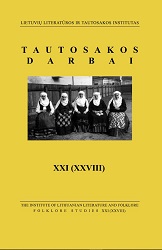
The article contains a brief review of spheres of folkloristic activities by professor Kazys Grigas. His most outstanding achievements, however, belong to the field of paremiology: thanks to his own ceaseless attempts and under his guidance, over 200 000 proverbs and proverbial phrases were systematized, and publication of the fundamental edition of “Lithuanian Proverbs and Proverbial Phrases” launched (vol. 1, 2000). K. Grigas was the author of significant works in comparative paremiology, including books like “Lithuanian Proverbs” (1976) and “Parallels of Proverbs” (1987), and also numerous studies and problem articles. He published and examined other small forms of folklore as well, including riddles, onomatopoeias, tong-twisters, jokes, etc. K. Grigas also significantly contributed to the Lithuanian folklore historiography, conducting research into the 19th century, especially the works by S. Daukantas. K. Grigas was an active folklore collector, a devoted teacher of the young folklorists and researchers, editor of various folklore publications, etc. His merits in Lithuanian folklore research and popularization are truly magnificent.
More...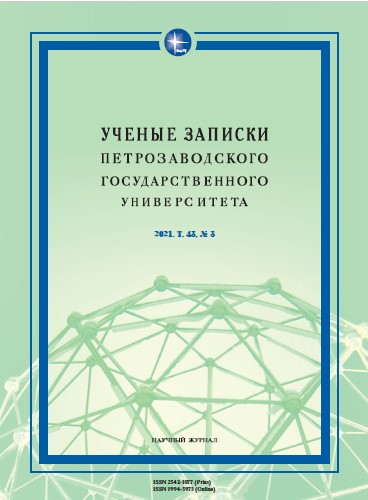
The study is based on the original poetic and liturgical texts created between the XI and the XV centuries. The research novelty lies in the fact that it investigates for the first time the word combinations with the genitive case functioning in the Old Russian hymnographic texts. The article analyzes the constructions formed using the model “noun + noun in the genitive case”. Observations show that this type of word combinations is the most frequent one among the combinations with subordinate adnominal cases. The purpose of the study is to determine the meanings of the genitive case through lexical and semantic analysis of the components of the word combinations, as well as to establish correlated grammatical constructions with other case forms and adjectives. The analysis revealed eight specific meanings of the genitive case. In quantitative terms, the groups of word combinations are represented unevenly, with combinations in which the meaning of the genitive case is defined as metaphorical being the prevailing group. Within each semantic domain, there is a different ratio of parallel grammatical constructions. Along with the substantive-adjacent genitive case, there are combinations with the adnominal dative case or with a dependent adjective. Other semantic zones include three correlated constructs. In some cases, combinations with the dative and local cases are used in parallel with the genitive case (for example, when expressing the object meaning), while in other cases a number of correlated constructions form combinations with the dative case or a dependent adjective. It is concluded that there are such semantic areas, where the substantive-adjacent genitive case serves as the only means of expressing the meaning.
More...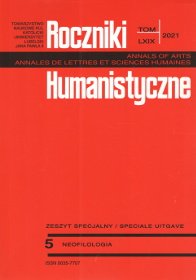
This paper presents the results of a cognitive-semantic analysis of the concept patriotism in both German and Polish. The corpora data come from the tabloid Bild and its Polish counterpart Fakt. The theoretical-methodological background is Cognitive Semantics. The definition of the frame patriotism is also based on a quantitative and qualitative analysis, whereby the slots of the frame with their default values are determined with regard to German and Polish, and are then contrasted. The research object includes contexts with the lexeme patriotism and its derivatives, the contextual distribution of the lexemes, salient nominal phrases with patriotism and semantic- cognitive structure of the contexts concerning the concept patriotism.
More...
Review of: Naim Berisha “Vëzhgime leksiko‐frazeologjike në të folmet e rrafshit të Dukagjinit”, Instituti Albanologjik, Prishtinë, 2017, 346 f. Review by: Abdurrahim Maxhuni
More...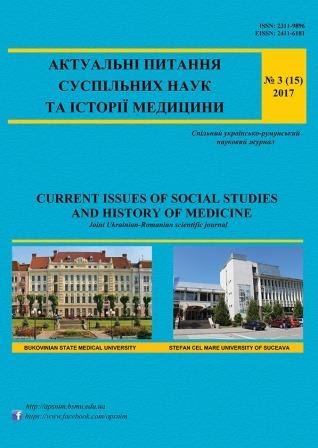
The purpose of the article is to study and systematize formal -grammatical features of etiquette greetings and to implement their syntactic typology. The relevance of the work is determined by the importance of the subject of study and lack of clear etiquette greetings’ syntactic typology in modern Ukrainian linguistics. The scientific novelty of the study is the improvement of syntactic structural schemes typology of etiquette greetings. Research methods: the historical, logical, structural, cognitive, scientific methods were used in the work. Conclusions. The implemented syntactic typology of etiquette greetings confirms the diversity of their structure. The most productive forms of their implementation are nominative one-member sentences and verbal (one-member as well as two-member) ones. According to the semantics and communicative purpose, we can identify two types of nominal greetings structures: nominative narrative (declarative) sentences) and nominative imperative-optative ones. Nominative imperative – optative greetings are full of emotional content. Nominative and imperative – optative meanings are combined in their semantics e.g. “Myr domu Vashomy!” (Peace to your house!), “Khl’ib ta sil’!” (Bread and salt!). In the fixed one-member verbal sentences the main member is performed by a certain conjugation e.g. “Vinshuiu!” (Congratulations!)", “Biu cholom” (I bow to you), “Bozhe pomozhy” (God, help (us)). Fixed two-member etiquette greetings have different stylistic tinge of “politeness”, so they are not used in all the language genres. They are mainly used in informal and belletristic language styles.
More...
The article deals with verbalizers of the phrasal concept REPENTANCE in the system of Christian moral values of the English language culture. In the proposed study, cognitive-matrix analysis was implemented as the main research methodology, the principles of which were developed by Yu. M. Boldyrev. It is based on the concept of matrix (nets) domains, in which the matrix can be illustrated graphically as a grid. It is understood as a simple set of conceptual areas, and the conceptual sphere or domain - as a context for updating the meaning of the word. The domains‟ matrix is identified in intelligence as a value system of Christianity verbalized through the system of biblical phraseology of American and British English. Scientific novelty. The exploration specifies the terminological scope of the term “biblical phraseology / biblical expression”; the essence of the method of cognitive-matrix analysis is shown, too. Conclusions. The analysis is underpinned by phraseographic sources and the conceptual component of the concept REPENTANCE has been characterized. This analysis has revealed the place of this linguistic essential quality in the structure of the integrative concept (matrix) of CHRISTIAN MORAL VALUES and the correlation of the concept of REPENTANCE with the domain of repentance is determined. The selected biblical expressions, verbalizers of this concept, are defined and characterized.
More...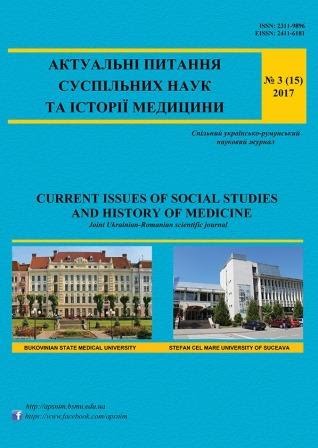
The purpose of the article is to analyze the paradigmatic-syntagmatic relations in the lexical-semantic group of movement verbs performed by a person on the material of Olga Kobylyanska’s story “The Earth”. The relevance of the article is determined by the need of further in-depth study of Olga Kobylyanskaya idiostyle in order to form a cognitive-pragmatic conception of the writer's artistic discourse. The novelty of scientific reseach is conditioned by the fact that the paradigmatic-syntagmatic relations of movement verbs in the Olga Kobylyanska's language have not yet been the subject of analysis. Research methods. In the article as the main general scientific methods of analysis and synthesis are used, as well as linguistic – descriptive, structural methods and method of component analysis. Conclusions. Verbs of movement performed by a person are represented by two groups: verbs of directed and undirected movement. Verbs of directed movement are represented by the verbs from the point of destination and the verbs to the point of destination. The tokens that are the coordinates of the movement from the point of destination are nouns used in Genitive case with prepositions з, від, із. The syntagmatic connection of movement verbs from the point of destination with the nouns is formed by verb-noun phrases based on the conjugation. The range of verbs that denote movement to the point of destination is much wider. Among them there are formations with the prefix ви-, при-, до-(ді-), під- по-. The most commonly used verbs are іти-прийти, ходити-приходити, прямувати, приступати. They have a diverse range of compatibility. Undirected movement of a person in the language of O. Kobylyanska’s story “ The Earth” denotes a wide range of verbs, among them there are a lot of prefix formations. Undirected movement is reproduced first of all by the verbs іти, ходити.
More...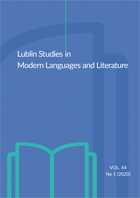
This article aims firstly to delineate the expressive formulas of conversation (FEC) compared to other subtypes of pragmatic phraseology, highlighting their main characteristics. Secondly, to outline a simple typology of FEC, based on two criteria: discursive and pragmatic. Finally, to propose the translation of a group of FEC while comparing the structure of formulas in French and their Arabic equivalents.
More...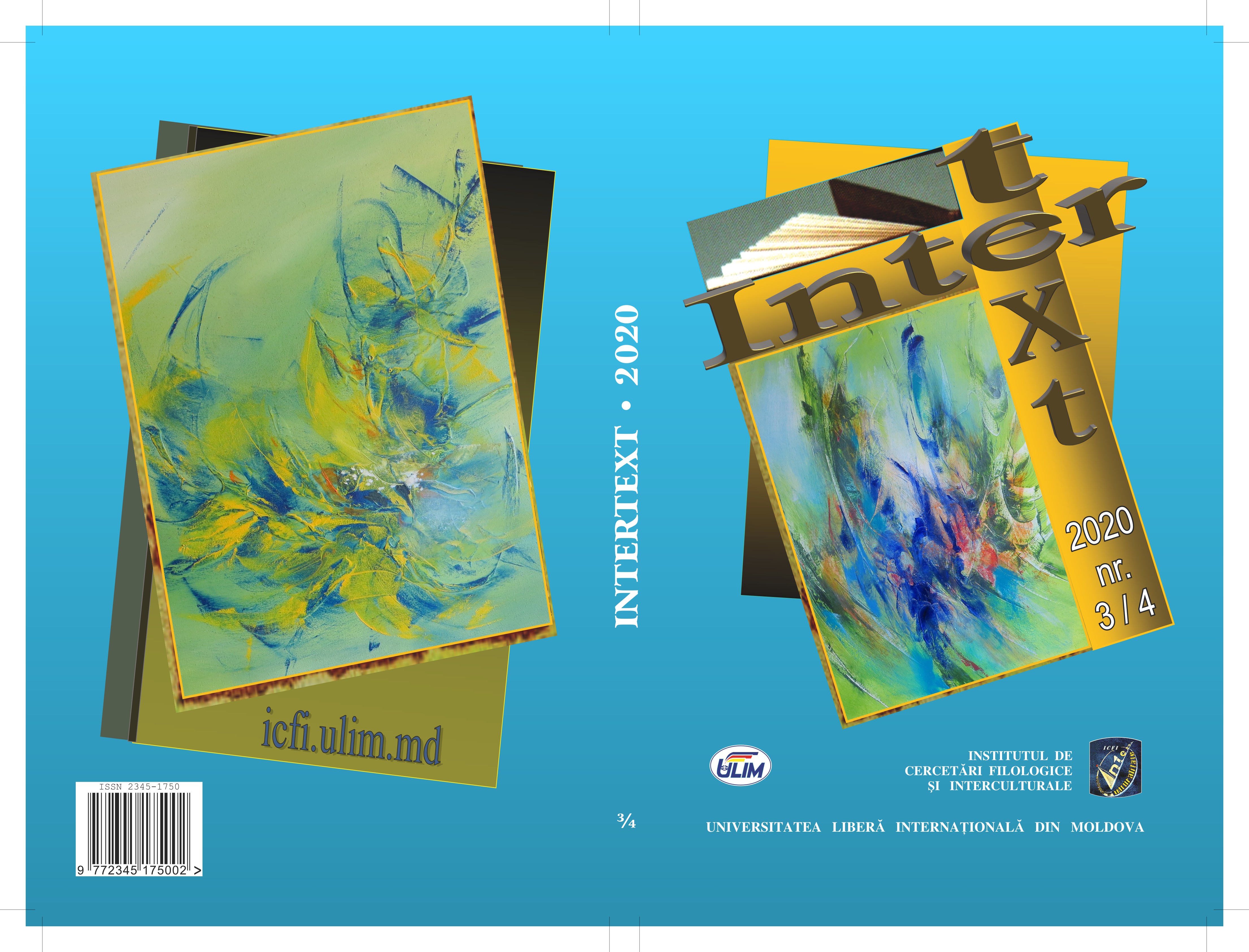
The Construction Grammar, as a relatively new direction in linguistics, claims to take account of all linguistic phenomena as far as possible. The linguistic phenomenon dealt with in this article belongs to so-called "multi-word units" and as such is primarily the object of phraseological research. In this article the author tries to treat such units using the example of the multi-word unit "wie auch immer" outside of phraseology and namely in the area of Construction Grammar. In order to be able to identify the units treated in the text of the article as constructions in the sense of the Construction Grammar, one has to check to what extent these units correspond to the characteristics of a construction. As is known, the constructions are prototypical form-meaning-pairs the correspond to the principles of non-compositionality and conventionality. In this article the author shows how the phraseological units can be evaluated from the perspective of the Constructions Grammar. A lot of space is given to determine the constructional grammatical meaning, which contains not only the semantic but also the functional-pragmatic aspects. To this end the author makes an empirical observation of how the above-mentioned unit behaves in different contexts, which syntactic functions it can assume, and how the syntactic functions correlate with the semantic aspects. Such an empirical description enables the so- called corpus linguistic analysis.
More...
Phraseology as well as the lexis is constantly evolving, so its object of study must be viewed both synchronously and diachronically. For this reason, in the present article, we propose to analyze the stable polilexical units (SPUs) from the point of view of the extralinguistic causes that motivate the emergence of the stable polilexical units in the Romanian language (Primary stage). Linguists suggest different ways of classifying them. We consider that it does not matter whether the SPUs are borrowed, calqued or have entered the language in a cultured way. All these SPUs are of foreign origin and for this reason must be considered common for a large number of languages. In this study, we will address phraseological units and set expressions that have a biblical origin. These stable polilexical formations entered the language when there was the need to name the given reality. However, the motivation of their use is determined by the degree of culture and the familiarity with fiction of the person concerned. Below we propose the general approach to SPUs of biblical origin with their equivalents in French, Russian and Bulgarian.
More...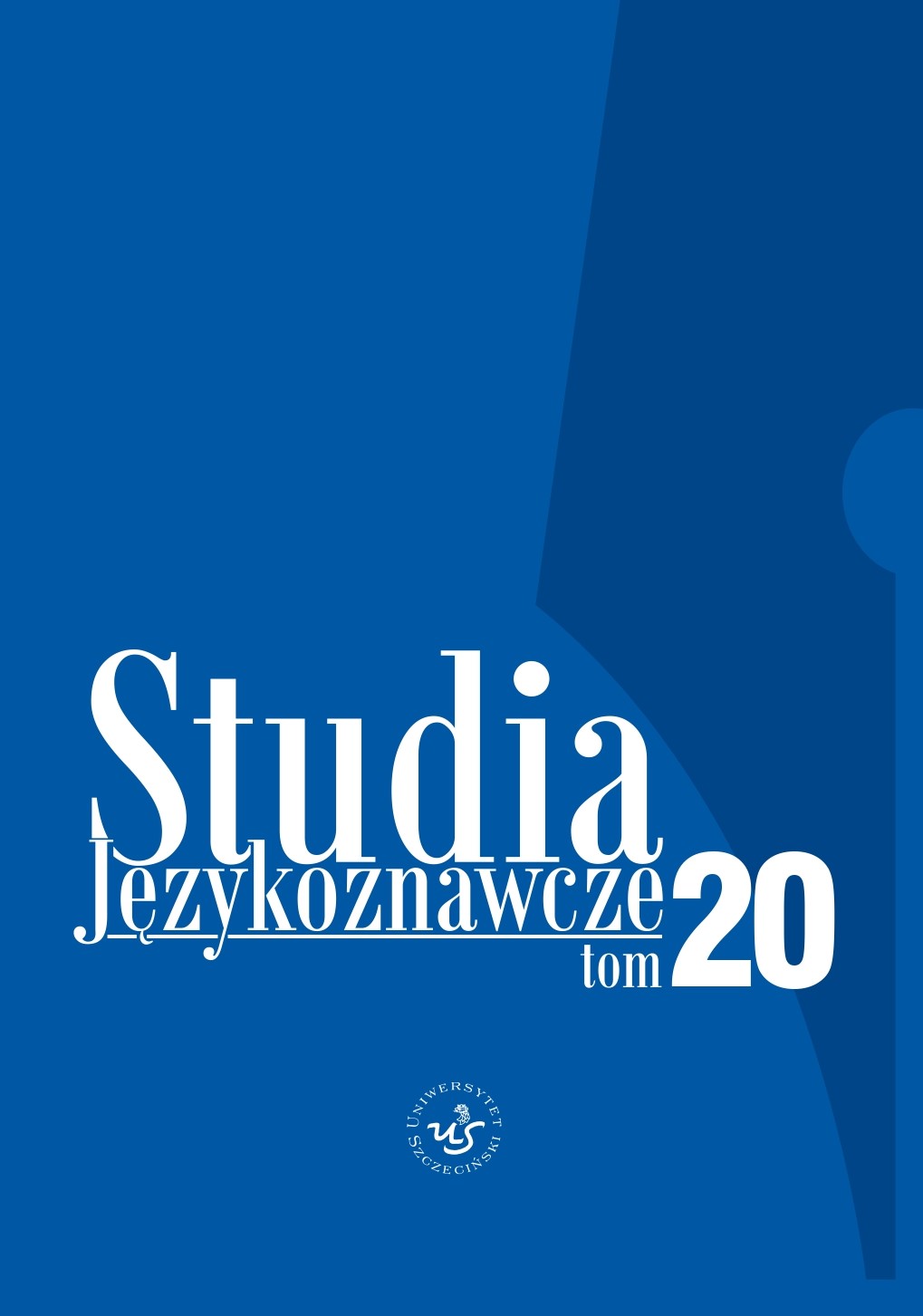
The article contains the analysis of the usage of collocations in the titles of Polish contemporary crime comedies as a source of humour. Ways of exploiting the canonical forms of lexical units at the phraseological level were described and two main types of phraseological innovations were discerned and discussed: semantic and formal. The methodology used for description of the titles is primarily structural and amounts to determining what collocation was used or how it was modified, and why, as a result, it has a comic effect. The humour of the titles is discussed from a pragmatic perspective thereby leading to conclusions concerning mainly the persuasive and advertising function of the analyzed paratexts.
More...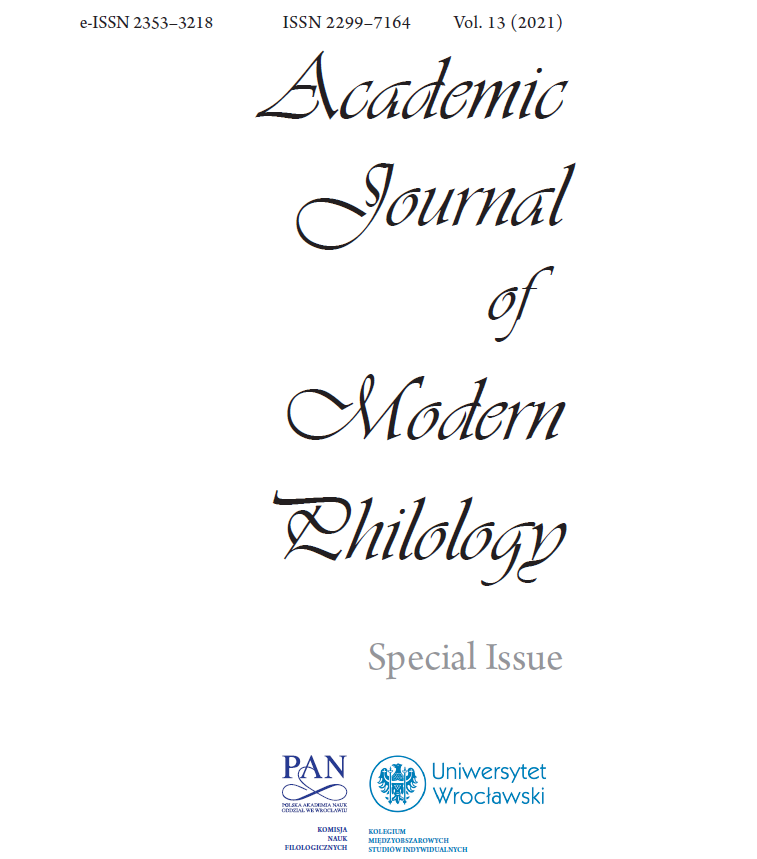
This article concentrates on the automatic extraction of collocations, defined by the Explanatory and Combinatorial Lexicology as phraseological units composed by two elements – the base and the collocate. The aim of this article is to propose a methodology to follow in order to automatically extract collocations from a terminological corpus. This method takes into account different measures: the syntactic dependences between the items of the collocation, their frequency, their tendency to co-occur (PMI) and their specificity to the e-commerce domain. After having explained the theoretical framework, the methodology is illustrated using a pilot study of the French terminology of e-commerce. In the pilot study, data were extracted from a corpus made up of e-commerce texts, which are drawn from a larger corpus called DIACOM-fr, a corpus in the process of being built at the University of Verona within the project Digital Humanities Applied to Foreign Languages and Literatures. Data extraction was primarily done using two tools: Stanza a Python natural language analysis package developed by the Stanford NLP group and TermoStat an automatic extractor tool developed at the Observatoire de Linguistique Sens-Texte of the University of Montreal.
More...
The Arabic lexicon is built on consonantal roots. Unlike agglutinative languages, it uses internal flexion. However, a significant part of modern Arabic scientific terminology is borrowed from Western languages, especially French and English. Extensive borrowing of this kind risks the emergence of two distinct subsets within the Arabic lexicon: a. the general vocabulary includes the words used by everyone in everyday life. This vocabulary is built on consonant roots, mainly with three consonants. Unlike French and English dictionaries, Arabic dictionaries are organized by roots and not by entries in alphabetical order. ; b. the specialized vocabulary includes the terms of scientific and technical disciplines used by specialists in their fields. This vocabulary is built on syllables like the vocabulary of European languages. This text will examine the problems of extensive register-specific lexical borrowing, and the risk of fracture that this presents
More...
The purpose of this study (based on the analysis and discussion of cases of erroneous use of words monografia / monograph, autentykacja/authentication, kolaboracja/collaboration, pamflet/pamphlet, stary druk/alter Druck, Frühdruck/old print, old book) was to outline the problem of term equivalence resulting from unintentional linguistic interference (loanwords, tautonymy, anisomorphy, calques) in the communication of various members of the scientific community (authors, translators, editors and proofreaders). Multilingual dictionaries, noting only the equivalents without indicating their meaning or examples of their use, not only do not protect against committing such errors, but can also be their source. The study resulted in a concept of a multilingual encyclopaedic dictionary, which, by preventing the incorrect equivalence of terms in the field of document types, will help in formulating correct oral and written presentations, descriptions of documents used in information resources, their correct translation and building search tools on their basis – in particular, bibliographic databases and digital libraries, where they are used as a search or selection criteria for materials
More...
In the 1970s in the Soviet Union (by the standard: GOST 16448-70 Bibliografiâ. Terminy i opredeleniâ, Moskva 1971) the top-down term ‘библиографоведение’ was introduced to denote a scientific discipline that is part of the complex of bibliological disciplines, researching and developing issues of the theory, history and methodology of bibliographies as well as methodology, technology and organization of bibliographic activity. After the term became popular in the Soviet Union, there were suggestions in several sources in the years 1974–1999 that its equivalents also began to function in other languages – Polish, English, German, French. The analysis of data from Google Books Ngram Viewer, carried out for the other article (see: Jakub Maciej Łubocki, O problemie wieloznaczności terminu ‘bibliografia’ kolejny raz – o terminie ‘bibliografoznawstwo’ po raz pierwszy, „Roczniki Biblioteczne”, 2018 (R. 62), s. 135–178; doi.org/10.19195/0080-3626.62.9), allowed for a proper (mainly negative) assessment of these suggestions. This article highlights the advantages and disadvantages of conducting an analysis with the use of this tool. It also allows us to shed light on the problem of – sometimes too careless – equivalence of terms (and thus improper equivalence) and the possibility of its verification in the absence of data in the available dictionaries.
More...